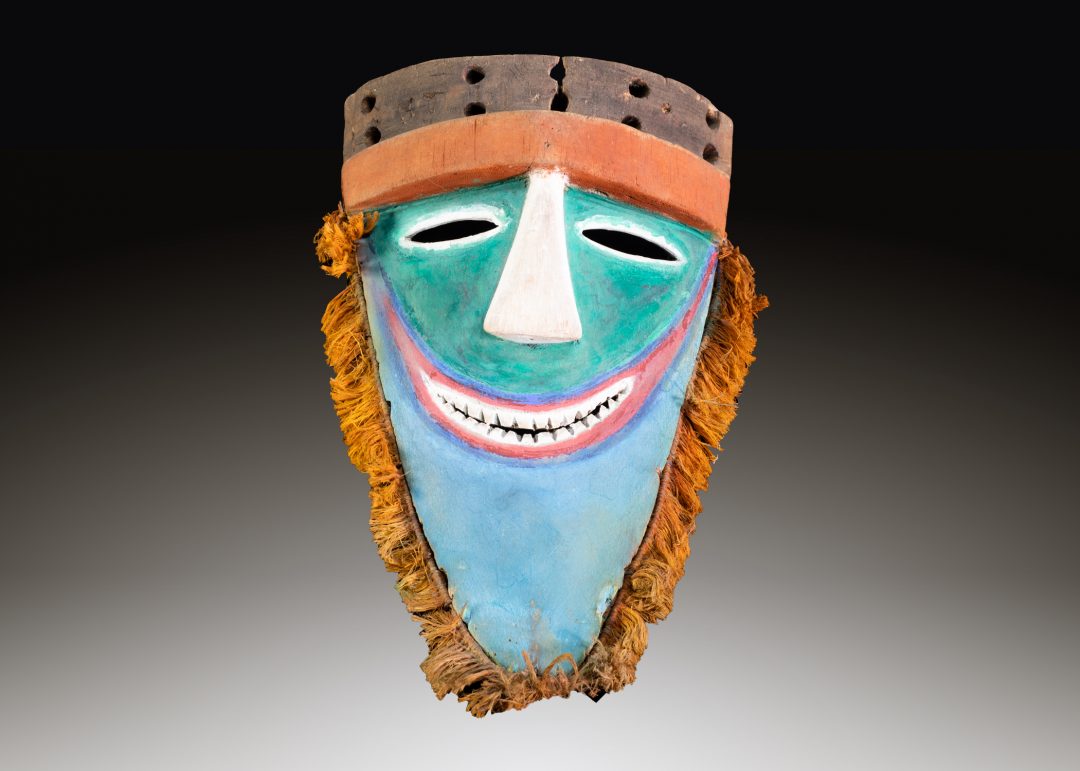Ramu River Mask
-
TitleRamu River Mask
-
LocationLower Ramu River, Madang Province
-
Date1940s
- Size17cm (W) x 49cm (H)
-
Price$3,600.00
Collected by William Lesel Collins AMF QX55819 Warrant Officer 2nd Class.
Stationed in New Guinea as part of the ANGAU (Australian New Guinea Administrative Unit) from 1941 to 1946. After the war he worked at the Department of District Services and Native Affairs in Port Moresby till 1950.
This style of mask is used in ceremonial dances, where the mask is attached to a larger cane dance costume. These masks from the Lower Ramu were also traded along the coast into the Sepik region and out to the and out to the Islands in the Bismarck Sea.
AB Lewis (“New Guinea mask”, Chicago Field Museum of Natural History, Department of Anthropology, no. 4, 1922, pg. 115-19) describes a ceremony at Awar, south-east of the Ramu River mouth, where four masks were used representing water spirits. Two very large feather head-dress masks were male; two wooden ones of the same variety as this mask, with cane frames covered with leaves were female, the mothers of the males. A procession of drummers and singers accompanied the masks to the end of the village and back to an enclosure. The performance took place twice for five days before the ‘spirits’ returned to their lagoon.
This mask is in very good condition and includes custom metal stand
Collected by William Lesel Collins AMF QX55819 Warrant Officer 2nd Class.
Stationed in New Guinea as part of the ANGAU (Australian New Guinea Administrative Unit) from 1941 to 1946. After the war he worked at the Department of District Services and Native Affairs in Port Moresby till 1950.
This style of mask is used in ceremonial dances, where the mask is attached to a larger cane dance costume. These masks from the Lower Ramu were also traded along the coast into the Sepik region and out to the and out to the Islands in the Bismarck Sea.
AB Lewis (“New Guinea mask”, Chicago Field Museum of Natural History, Department of Anthropology, no. 4, 1922, pg. 115-19) describes a ceremony at Awar, south-east of the Ramu River mouth, where four masks were used representing water spirits. Two very large feather head-dress masks were male; two wooden ones of the same variety as this mask, with cane frames covered with leaves were female, the mothers of the males. A procession of drummers and singers accompanied the masks to the end of the village and back to an enclosure. The performance took place twice for five days before the ‘spirits’ returned to their lagoon.
This mask is in very good condition and includes custom metal stand











